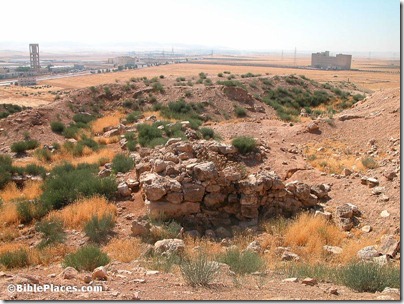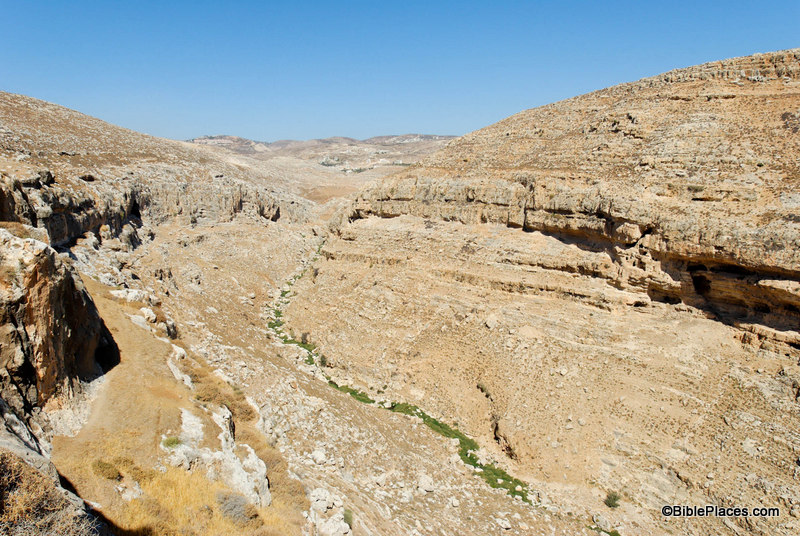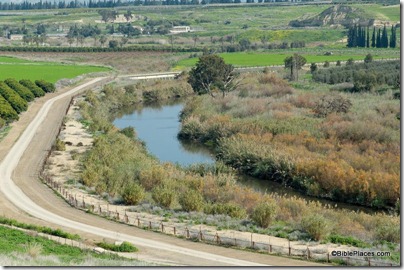Paul Lapp’s description of his April-May 1967 excavations at Tell er-Rumeith (Ramoth Gilead?) provide some interesting insights into the life of an archaeologist nearly 50 years ago. The account continues from yesterday’s post:
“The first few hours on the mound were chilly and windy, but by the time of the coffee break at 9:45, the sun had warmed the tell to a comfortable degree. The fifteen minute respite sustained us until noon when work stopped for 45 minutes. After lunch we excavated for three more hours till 4 o’clock when the laborers began to return to Ramtha and we fortified ourselves with tea and bread. Invariably most of the field supervisors then returned to their plots to draw the top plans or help one another with section drawings. Darkness would force us to leave the mound and return to our camp by six o’clock. It was then almost time for supper. After a half hour elapsed in the mess tent we were ready to begin the pottery reading. We had worked out a system so each knew when he was due at the pottery tent, and in that way there was no delay. The remainder of the evening was given to preparation of the field books. Pressure lamps are not conducive to the kind of precision that is required for keeping records so one has to be careful to double-check each entry. The field book up to date, it was then almost eleven o’clock and time to retire for the night. From that moment on no human sound broke the stillness of the night in the plains of Gilead. Every minute of sleep counted in order to be ready to face the rigors of the next day’s work.
(photo source)
“Our camp consisted of about a dozen tents, mostly of the small variety, and was located to the east at the base of the mound, which is largely a rocky outcrop. With the exception of several chilly nights at the beginning of the season and a strong wind which cost us a half-day’s work, the weather was nearly perfect. The countryside was green when we began and golden when we finished—just in time, for we were beginning to lose our workers to the grain harvest. Despite our pre-Easter apprehensions over the severe winter rains, it proved to be an ideal time for the campaign. In the end we felt we had a complete enough story of the tell to abandon the site to some future excavator, and we were determined to set down the story as soon as possible. However, the unforeseen event of June has delayed this report.
“My last diary notation on the Rumeith dig reads, ‘The end of a phase or an era.’ This was written on May 12, 1967; the first entry dates back to the sounding of the spring of 1962. I was thinking of the loss of Aboud, who had always been my right hand man at excavations, of the talk of major changes for the Jerusalem School [of ASOR], of the fact that this was the last campaign of a small scale that I would conduct as part of the School’s annual program. At the time, however, I was not thinking of the Six Day War, though the final words of my diary were fulfilled like an ancient prophecy. This accounts for the disjointedness of this letter, begun in Amman during the war, continued in Tehran and Athens, and finally finished in Jerusalem. Incidentally let me take this opportunity to thank all our ASOR friends for their kind expressions of concern during the crisis, to give assurance that the Lapp family is safely and happily back home in Shafat, and to express the hope that some of you will have the opportunity to visit us during the coming year.”
Travel from east Jerusalem to Tell er-Rumeith on the heights of Gilead was not difficult in April and May 1967 as there was no international border to cross. As he observes, everything was to change the next month.
Paul Lapp died tragically in a swimming accident in Cyprus a few years later. His wife, Nancy Lapp, edited these essays and prepared it for publication while raising their five young children.
The Tale of the Tell is still available both new and used from the publisher and Amazon and may be available in your local library as well.



